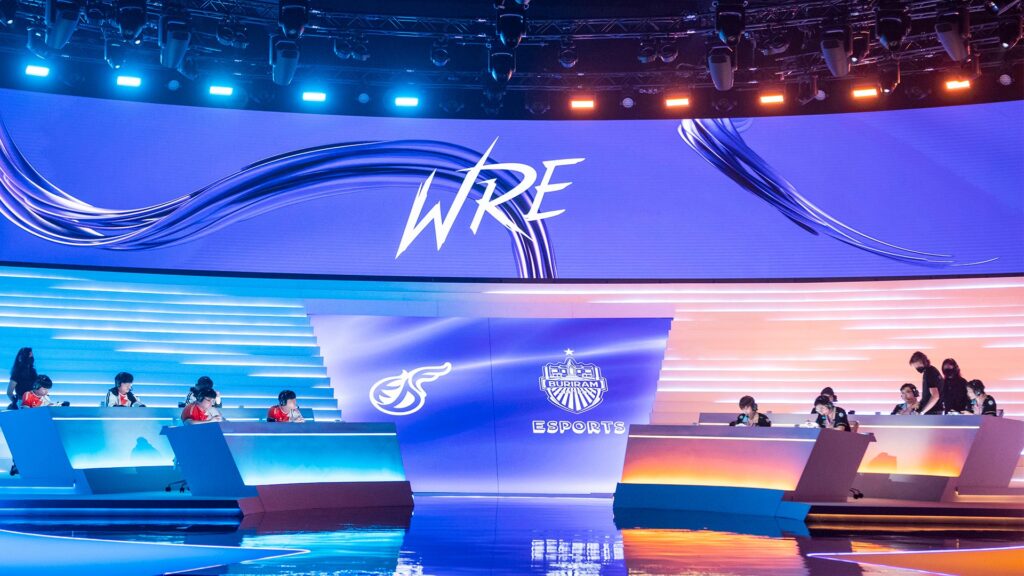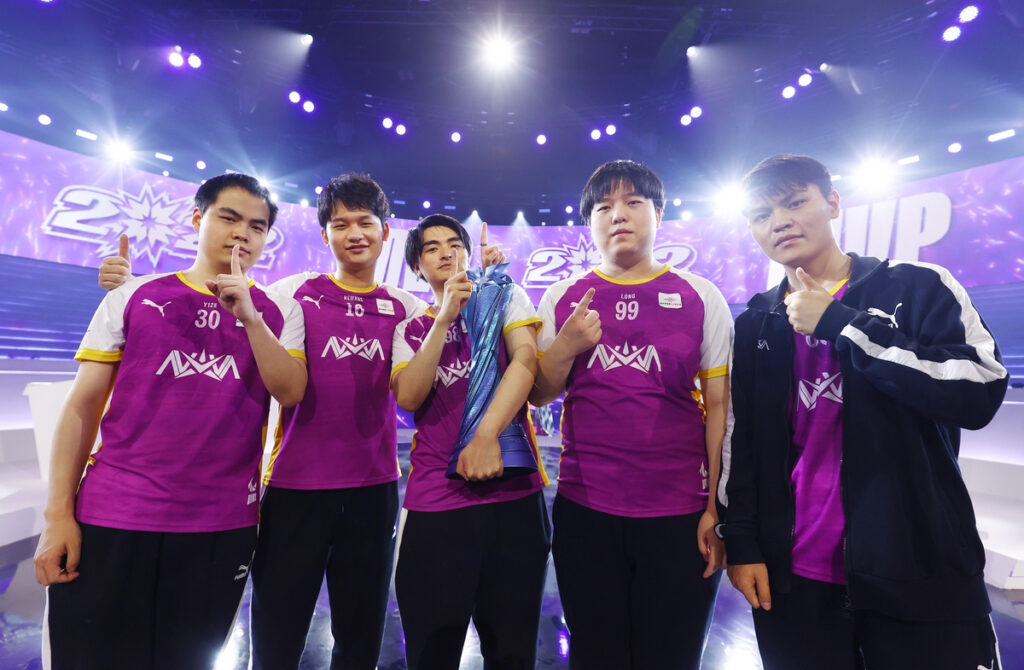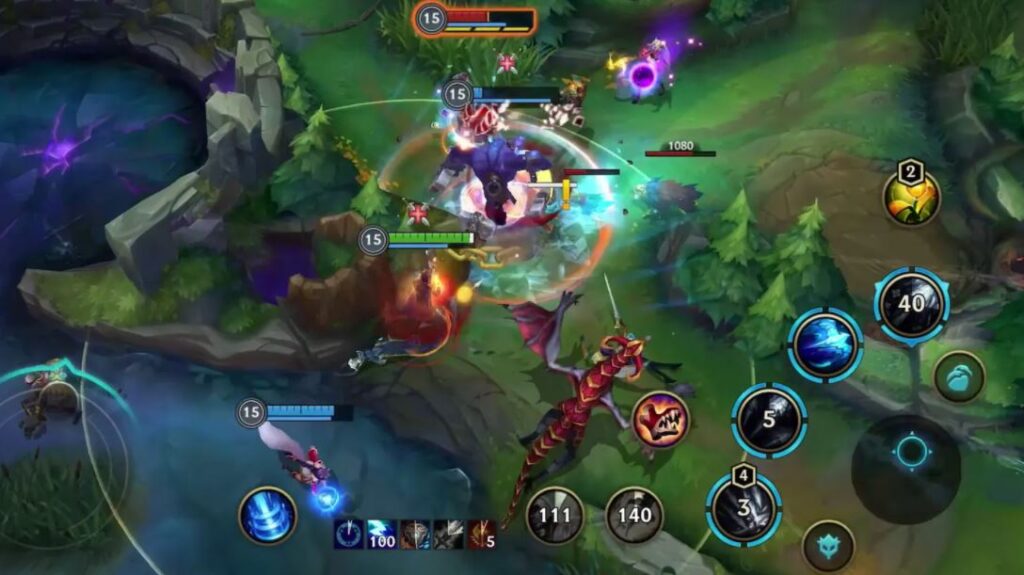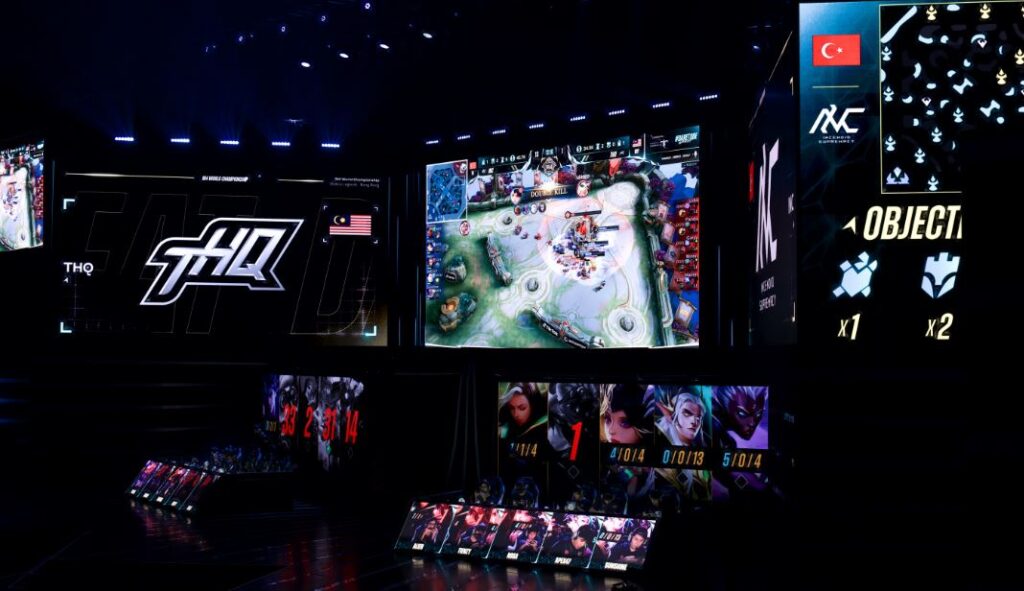League of Legends is arguably the most successful MOBA game today, with 150 million active players, a spin-off games, and even a popular animation on Netflix.
But the less said about Wild Rift, its mobile version, the better. The game is played by thousands of players every day, but its popularity has been waning since it was first launched in 2020 with many criticising Riot for paying scant attention to its growth.
What exactly happened to the game that was supposed to rival Mobile Legends: Bang Bang?
Little attention, few ideas

Riot’s intention to launch a MOBA tournament for mobile gaming in 2020 was not surprising, given the popularity of already existing mobile MOBA titles such as Arena of Valor, Vainglory, and Mobile Legends: Bang Bang. They, however, were confident that LoL’s large player base would help them promote Wild Rift and its competition, particularly in places with a small mobile gaming market, such as Europe and North America.
Wild Rift’s marketing did not go as smoothly as they had intended over time. Despite receiving positive feedback from the community during the limited testing period in early 2020, the varying release schedules for each zone made it difficult for players who wanted to compete in the Wild Rift tournament to adjust. Regions like Southeast Asia and China had their own tournaments from the end of 2020 to 2022, while others waited from the 2021 to mid 2022.

Riot Games’ plans, which had initially targeted regional and global Wild Rift events on a regular basis every year, were impeded by the difference in competition roadmaps and were put back to 2022. Although its first world cup competition, Global Championship Icons 2022, was successfully held in Singapore, it was claimed that the hectic competition schedule over 2021-2022 dampened interest in the contest. The tournament only reached 54,260 in peak viewership out of a total airtime of 93 hours and 20 minutes, which is a very low amount for an S-tier mobile gaming competition.
As the competition season went on, Wild Rift’s esports audience figures continued to drop, with the West region averaging barely 1,000 viewers every competition. Riot eventually decided to discontinue the Wild Rift esports project in its entirety, with the exception of the Asia region, near the end of 2022, citing “the vigorous mobile esports market in Asia and the level of competition in these regions” as the reasons for their new marketing plans.
However, the poor viewership ratings in the Wild Rift Asia League 2023 Season 1, which finished over two weeks ago, revealed that Riot has failed to address critical flaws that have caused the game to be abandoned by its community.
A lack of content and balancing issue

In numerous interview sessions with several former Wild Rift pro players and content creators that have circulated on social media in the last year, most believed that professional Wild Rift players left the game due to balancing issues and some technical problems in the game that have never been resolved.
Christiaan “Hellsdevil” Enwiah, a former European Vainglory and Wild Rift pro player, has often criticized Wild Rift’s competitive matching mode structure, which he believes to be detrimental to high ELO players. Furthermore, he felt Riot was giving huge buffs to popular champions in the game in an effort to lure casual gamers, thus making the game less balanced as its PC version. Interestingly, he once expressed an interest in MLBB competitive scene.
Several well-known Wild Rift casters from England, like Stuart “ITzSTUART” Gilson and Ceirnan “Excoundrel” Lowe, voiced similar thoughts. Stuart once expressed his displeasure with the patches released from November 2022 to January 2023, which rendered the ranked game unplayable. Meanwhile, Excoundrel posted a lengthy video on its YouTube channel claiming that Riot does not give enough incentives for content producers and does not have exciting in-game items/events like one of its competitors, MLBB.
Competition too hot to handle

Apart from numerous in-game problems, Riot has failed to provide solutions for professional teams who are still committed to the competitive scene of Wild Rift, especially those based in the Southeast Asia region.
One big reason: Moonton.
Two days ago, the CEO of the RRQ team Andrian “AP” Pauline highlighted an issue which is most likely the answer to why they are unable to compete with Moonton in SEA.
During his live Instagram session, AP stated that Moonton has a special commercial deal with teams in their franchise league that prevents them from creating new divisions to compete in the games that are considered competitors to Moonton’s MLBB. Moonton then asked AP to disband his team’s Pokemon Unite section in exchange for special in-game items that could be utilized to promote his team during this season’s MPL tournament.
Many, especially critics in Indonesia, have claimed that Moonton is trying to establish a monopoly by forbidding MPL teams to compete in the Wild Rift esports. But one former Wild Rift team owner in Indonesia told Ulti Asia that this was not the real issue: if Riot wanted to compete and set out clear incentives for esports, many teams would participate more eagerly.
In other words, Riot’s failure to challenge Moonton has meant that MLBB is now more popular than ever before.
This has led to a negative spiral for Wild Rift. Several big esports organizations have disbanded their Wild Rift division after dominating the competition in their respective regions. Two Indonesian giants, Echo Esports and Persis Solo, who had dominated the WRL Indonesia standings last year and joining SEA competition, are now fading into obscurity. In the Philippines, Blacklist International called it quits after failing to qualify for the WRL Asia 2023 a few months ago.
Riot must address more than just Wild Rift if they are to compete in the Southeast Asian market. Despite taking over publishing rights from Garena last year, their popular League of Legends series has not seen considerable development in SEA. Apart from the Valorant tournament, they have yet to present a specific roadmap for their esports strategy for the next season in SEA.



